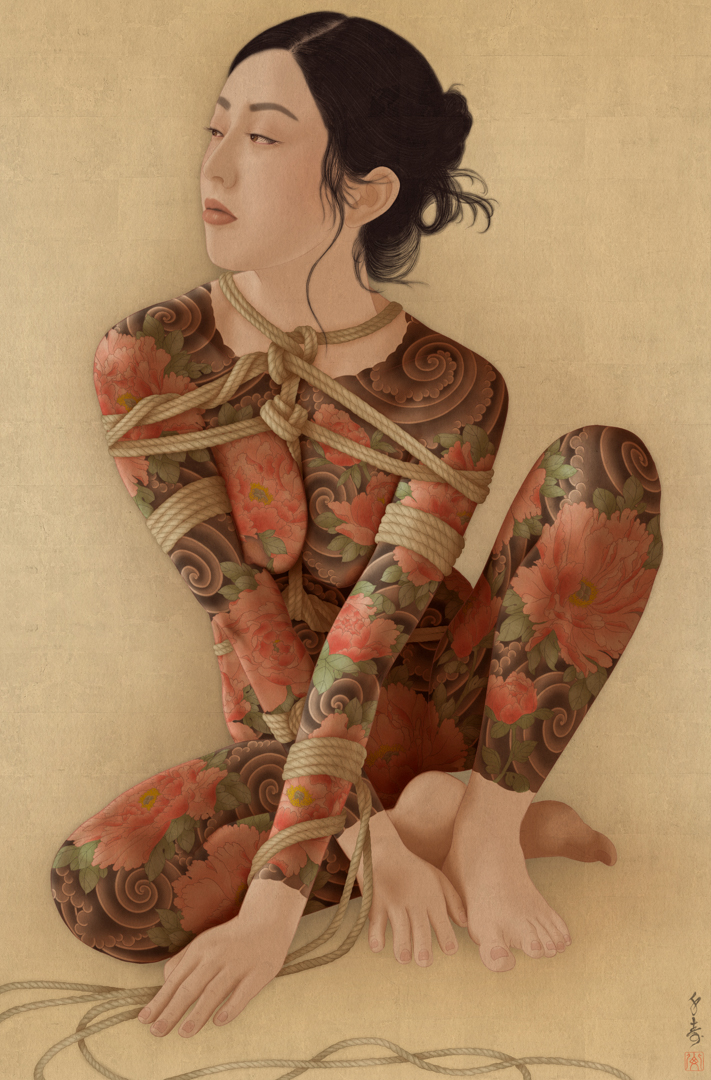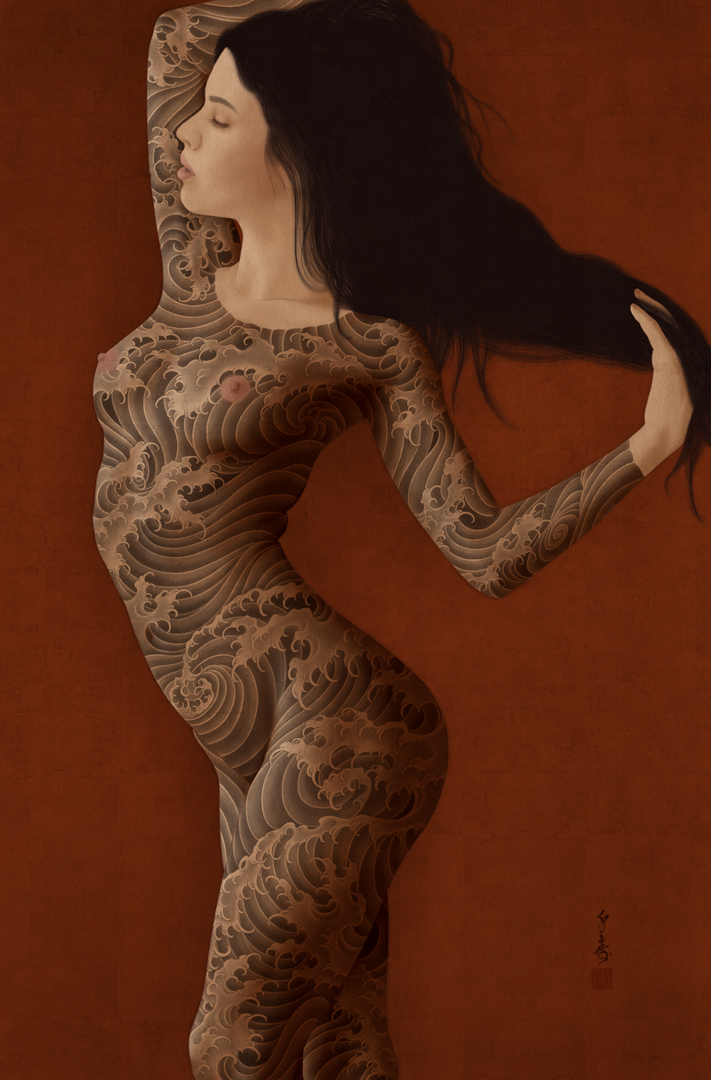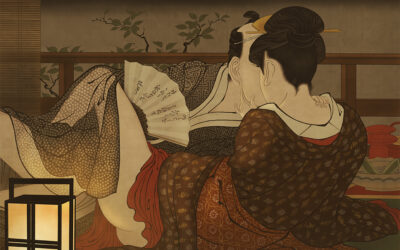Irezumi outlaw hero of the Suikoden – Kumonryu
When 14th-century Chinese author Shi Nai’an began writing his epic adventure novel The Water Margin (Shui Hu Zhuan), or Suikoden as it is called in Japan, little did he know that his story would spur a craze for body suit Irezumi tattoos in Japan some 500 years later.
Since the early years of the 19th century, in Japan’s capital city, Edo (now Tokyo), the 108 outlaw heroes of Shi’s 100-chapter novel had found a place in people’s hearts. It all began with the release of a Japanese translation by the renowned and prominent writer Takizawa Bakin in 1805, titled Shinpen Suiko Gaden (New illustrated edition of the Suikoden).
Each chapter published, richly illustrated by the famous artist Katsushika Hokusai, had the Edo public crying out for more. For Edoites, who were subject to the strict military dictatorship of the Tokugawa shogunate, these heroes and their struggle against corrupt officials and rulers of China’s Northern Song dynasty was highly inspirational.
In the original novel, there were 16 tattooed heroes, but Hokusai’s initial illustrations didn’t expand on the artistic possibilities. However, in 1827, the woodblock print publisher Kagaya Kichibei commissioned the up-and-coming ukiyo-e artist Utagawa Kuniyoshi to create a new series of prints illustrating the exploits of the Suikoden heroes.
The series, The 108 Heroes of the Popular Suikoden (Tsuzoku Suikoden Goketsu Hyakuhachinin no hitori), was published between 1827 and 1830 and spawned a craze for large tattoos that still reverberates to this day. Utagawa Kuniyoshi conjured up images of the tattooed heroes, dressing them in fantastic designs that borrowed and combined elements from Japanese and Chinese art. Kuniyoshi’s Suikoden series pivoted him to stardom and fame, and nothing would ever be the same again.During the second half of the 19th century, Irezumi tattoos and their wearers became increasingly popular as motifs in Ukiyo-e (woodblock prints). The people of Edo had a nose for the latest trends, and heavily tattooed skin was not an uncommon sight on the streets of the Japanese capital.
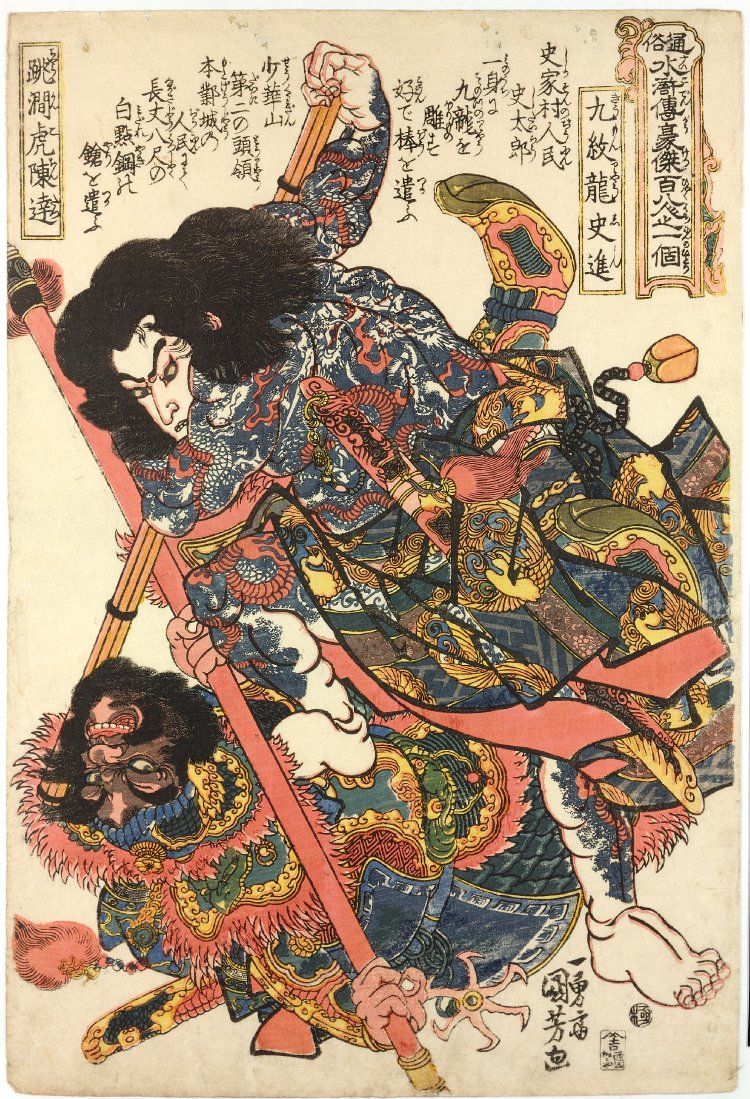
Kumonryu by Kuniyoshi. British Museum, Public domain, via Wikimedia Commons
Several groups and professions that wanted to emulate the bravado and flair of the Suikoden heroes began making full-body tattoos a part of their cultural identity. Among these were firefighters, construction workers, porters and gamblers. The tattoos signalled resistance against the military dictatorship that had brought peace to the country but done so at an increasingly heavy price of class segregation, faltering economy and censorship. The Tokugawa shogunate was growing weak, and the people of Edo could sense it. Despite this, there would still be a few decades until the Edo period would end in turmoil and rebirth as a new, modern nation.
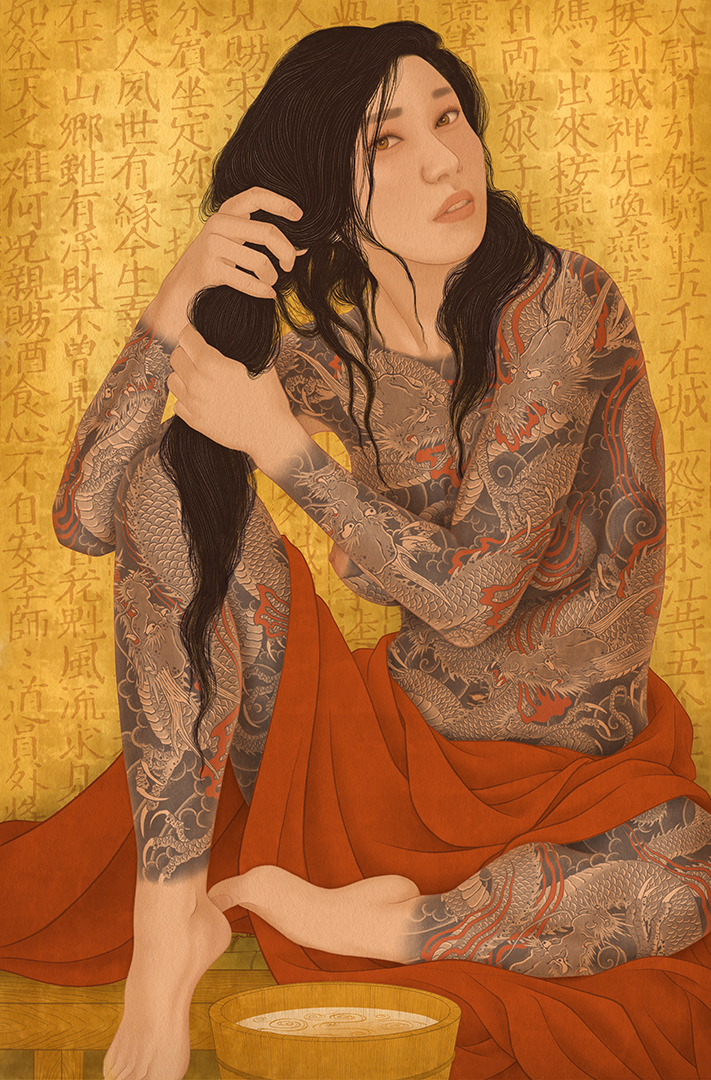
Kumonryu by Senju. From the Edo no Hana (Flowers of Edo) series
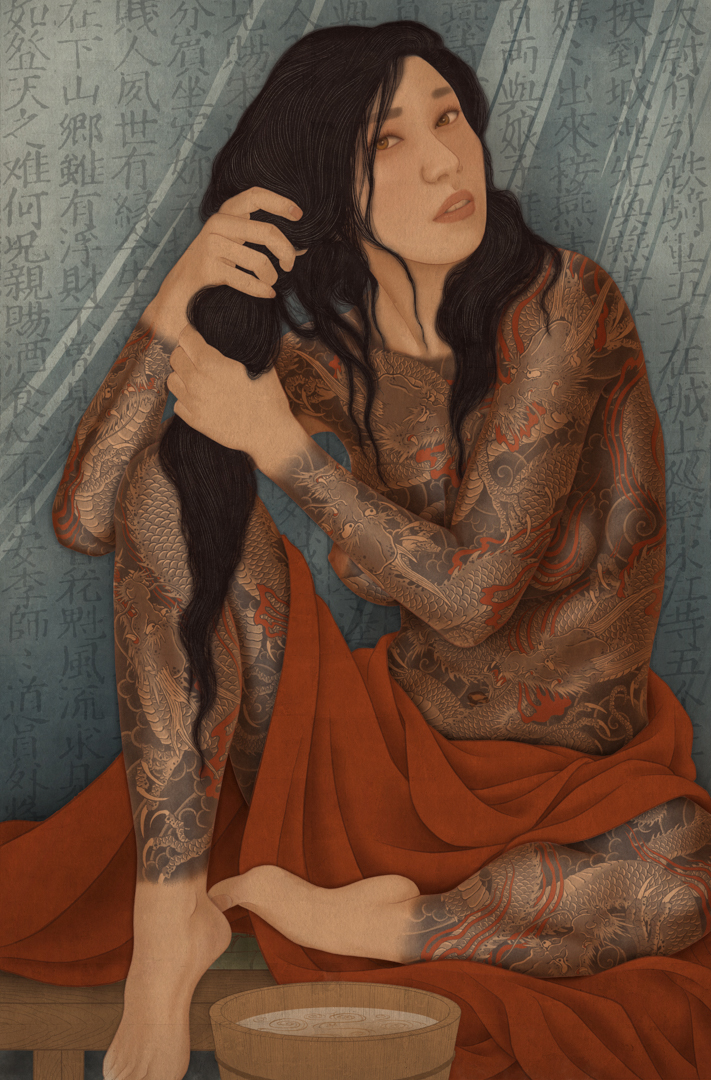
A later version of the same painting. This version is more closely resembling Kuniyoshi’s popular Edo period Ukiyo-e print series.
The Process of Painting Kumonryu’s Nine Dragons Irezumi Tattoo
Kumonryu (Shi Jin) is the leader of the rebellious Chinese outlaws of the Suikoden novel, commonly depicted with long, dark, flowing hair and fully tattooed in traditional Japanese Irezumi style. Kumonryu translates as Nine Dragons. Hence, the multitude of serpents adorning his skin.
The most complex part of the process, when I painted my female incarnation of Kumonryu, was designing the eight visible dragons that travel across her skin. The ninth dragon is on her back and therefore not visible. If I hadn’t had the benefit of a long career as a tattooer of traditional Japanese bodysuits, I would have struggled even more. In reality, it is substantially easier to draw straight on a living human body. The natural curvature of muscles and the client’s physical dimensions serve as a vital guide to where every line should go in order to create harmony. The flatness of a painting offers no such assistance.
During the entire process, the parts of the tattoo that are not visible in the painting must nevertheless be taken into account, being kept in mind as if in some cache of imagination. This way of working can be very mentally exhausting. Without the experience drawn from decades of tattooing, paired with intense studies of the Irezumi tradition, there can be little hope of a successful result.
Another issue arising when creating artwork like my portrait of Kumonryu is the immediate attention that such a complex tattoo will most likely attract from the viewer. The balance and harmony of the completed piece must work towards drawing the viewer first and foremost to the subject’s face and establishing Kumonryu’s human character. To arrive at this balance between open and detailed spaces, I had to rely on the time-tested technique of trial and error. Minute changes in the shading of details, barely visible to the viewer, slowly gave way to success. The artistic struggle taught me a great deal about patience and stamina, and subsequently, I improved as an artist.
It is a myth that creating art gets easier the longer you keep at it. What I have found to be the reality of painting is that one’s ambitions and visions multiply the further along the path one has travelled. Each work becomes increasingly complex, and the challenges are more demanding the more you learn.
I would have it no other way.
Edo no Hana (Flowers of Edo)
My new print series, Edo no Hana (Flowers of Edo), is a homage to everything that made Edo (old Tokyo) such a unique and thriving cultural phenomenon.
The title of the series borrows from the old Edo expression, “Fights and fires are the flowers of Edo”. However, I would like to extend and elaborate on its meaning, applying it to a more expansive appreciation of the Edo lifestyle.
Instead of relying on openly erotic Shunga images, as I did in my recent 36 Views of Mount Fuji series, I have this time chosen to express myself using the more subtle Bijin-ga (portraits of beautiful women) genre.
Each of the 36 prints in this ongoing series will portray the idea of Edo. In this aesthetical drama, traditional male roles will instead have a female playing the lead. They will appear as Kabuki characters, firefighters, Otokodate (street knights), gamblers, cooks, artists and warriors, to mention just a few. Naturally, these Bijin will inhabit traditionally female roles as well.
Continue reading
Classic shunga in praise of shadows .
Classic shunga in praise of shadowsClassic shunga art has influenced my work for a long time. Lately, I have been yearning to return to where my erotic art once began. Over time, I have developed a personal style of painting that bears little resemblance to the...
